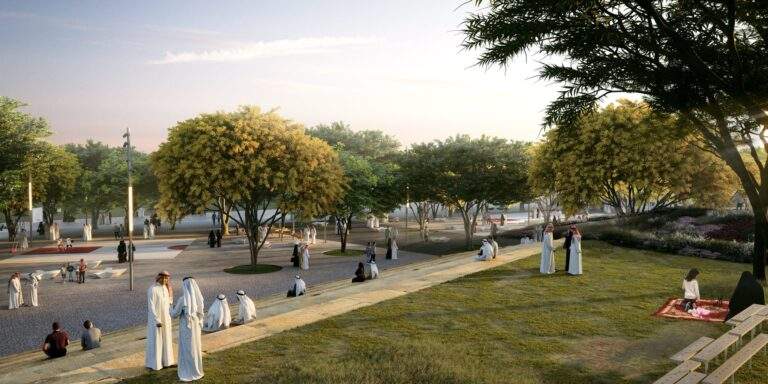The Impact of U.S. Elections on the Construction Industry: A Global Architectural Perspective
The Impact of U.S. Elections on the Construction Industry: A Global Architectural Perspective
The United States election results have always been a barometer for the direction of national and international industries. The construction industry, both in the United States and globally, is no exception. Policy changes that accompany new administrations can significantly alter the trajectory of building projects, architectural trends, and economic dynamics tied to real estate and urban development. The 2024 election, like those before it, has sent ripples across the construction sector. But how exactly do these political shifts translate into impacts on the architecture and building industries, both locally and globally?
A Change in Spending Priorities
Presidential administrations play a substantial role in defining federal spending priorities. The construction industry has seen drastic changes with shifts in the political landscape. During President Biden’s tenure, the Infrastructure Investment and Jobs Act—a $1.2 trillion plan passed in 2021—channeled substantial funds into public infrastructure projects. These investments benefited highways, bridges, public transportation systems, and clean energy infrastructure. The American Institute of Architects (AIA) estimated that the infrastructure law generated a 7.2% growth in architecture billings in 2022 as new projects took off.
However, with each election cycle, spending priorities shift. A more conservative administration might seek to reduce federal involvement in infrastructure spending, shifting the focus to private investment and potentially slowing public infrastructure projects. According to the U.S. Bureau of Economic Analysis, federal construction spending decreased by 11% between 2016 and 2018 under the Trump administration, when infrastructure investment was deprioritized. These shifts impact not just the availability of funds but the types of projects architects work on, such as fewer public transit systems and more private-sector developments.
Green Construction and Sustainability
The emphasis on green building standards also tends to ebb and flow with political leadership. Under President Biden, there was a focus on climate-conscious construction. The American Jobs Plan aimed to retrofit 2 million homes to increase energy efficiency and reduce carbon footprints. This policy encouraged architects to adopt LEED (Leadership in Energy and Environmental Design) standards, which increased by 20% across projects from 2021 to 2023. However, with the possibility of a new administration that may deprioritize climate change initiatives, the momentum around green construction could slow.
A less environmentally conscious administration may lead to the rollback of incentives that have helped drive sustainable architecture. For instance, the Federal Solar Investment Tax Credit (ITC), which encouraged solar panel installations on new construction, was instrumental in pushing sustainability forward in the built environment. According to the Solar Energy Industries Association (SEIA), the ITC has resulted in 54% growth in solar installations between 2018 and 2023. A change in government focus could stifle such growth, leading to reduced adoption of renewable energy solutions in building projects.
Tariffs and Building Material Costs
U.S. elections also influence international trade policies, which in turn affect construction costs. One prominent example is the imposition of tariffs on Chinese steel and aluminum during the Trump administration. This policy increased the cost of raw materials by approximately 25% for steel and 10% for aluminum, according to the Associated General Contractors of America (AGC). These increased costs led to a 3.5% rise in construction project costs across the United States, affecting developers, builders, and architects alike.
In contrast, a government that promotes free trade can lead to lower material costs and, consequently, cheaper construction projects. This can have global ramifications; as U.S. projects become more affordable, international suppliers may see increased demand. A change in U.S. leadership could thus lead to changes in global supply chains, influencing everything from the availability of high-quality materials to architectural design choices made to keep projects within budget.
Interest Rates and Housing Market Volatility
Elections indirectly affect the construction industry through changes in fiscal policies, such as interest rates. Housing and real estate development is highly sensitive to changes in interest rates, which are influenced by the federal government’s fiscal policy. After the 2020 elections, there was a notable change in mortgage rates, which were kept low to stimulate economic recovery amid the pandemic. According to Freddie Mac, the average mortgage interest rate dropped to a historic low of 2.65% in early 2021.
These lower rates led to a boom in residential construction projects, with U.S. Census Bureau data showing an 11% increase in new housing starts in 2021. However, the outcome of the 2024 elections could lead to a shift in economic policy, resulting in interest rate hikes. Higher rates can make borrowing for construction projects more expensive, slowing growth in the residential sector and impacting the affordability of new homes.

The Global Impact on Architecture
The influence of U.S. elections on construction also extends internationally, given the interconnected nature of global finance and development. A shift towards protectionist policies could affect foreign investments in U.S. real estate, especially in cities like New York and Miami, where international developers have been significant contributors. According to Statista, international real estate investments in the U.S. totaled approximately $120 billion in 2022, with much of that going into high-profile urban projects. Any election-driven shift that disincentivizes foreign investment could lead to reduced activity in high-rise construction and urban architectural landmarks.
Moreover, U.S. leadership in green architecture and urban planning tends to influence global standards. The Biden administration’s push for carbon-neutral construction inspired similar regulations in Canada and the European Union, with the EU Green Deal echoing many of the same sustainability targets. A political shift in the U.S. could thus dampen the momentum behind global initiatives to reduce the construction industry’s carbon footprint, impacting international architectural practices.
Conclusion
The impact of U.S. elections on the construction and architectural industries cannot be overstated. From changes in spending priorities and green construction incentives to fluctuations in trade policies and interest rates, every election brings with it a new set of opportunities and challenges. Architects, builders, and developers must adapt their strategies to align with the current administration’s policies, which influence not only the availability of projects but also the cost, scope, and sustainability of these projects. The global architecture community watches U.S. elections closely, as the country’s policies reverberate through international markets and shape the built environment far beyond American borders.








The Impact of U.S. Elections on the Construction Industry: A Global Architectural Perspective